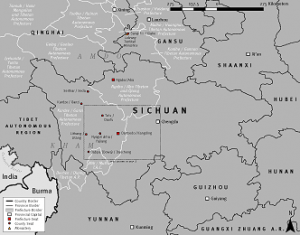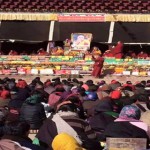 Chinese authorities have clamped down on shopkeepers in Drango County, Kardze, eastern Tibet by issuing a formal deadline of February 2 to turn in photographs of His Holiness the Dalai Lama or face severe punishment as a consequence. They have issued an explicit two-page notice that prohibits the sale or display of the Dalai Lama’s images in any shop or store that serves the public.
Chinese authorities have clamped down on shopkeepers in Drango County, Kardze, eastern Tibet by issuing a formal deadline of February 2 to turn in photographs of His Holiness the Dalai Lama or face severe punishment as a consequence. They have issued an explicit two-page notice that prohibits the sale or display of the Dalai Lama’s images in any shop or store that serves the public.
The policy was issued on January 4 by four county authorities, namely the Public Security Bureau (the police), the Cultural and Tourism Bureau, the Bureau for Religious Affairs and the department responsible for local businesses. The notice stated:
“If any shop or store has possessed photos and portraits of the Dalai Lama and displayed those before the date of this notice, they should be voluntarily surrendered to the Drango County Office of Culture and Discipline by 2nd February 2016”.
News of the ban has reached the international media with the BBC reporting it on their regular world news bulletins.
This policy has been promoted as part of a bigger ban on illegal publications such as “pornography and images of the Dalai Lama”. Tibetans supporting the spiritual leader have been viewed as partaking in an unpatriotic act and a threat to the Chinese power.
Currently, almost 40% of shopkeepers in Drango county have been displaying pictures of His Holiness, presumably for sale as well as display.
The Chinese government began banning the public display of photographs of the Dalai Lama in 1999. Major monasteries were warned of dire consequences if they participated in any public celebrations or photographic displays of the Dalai Lama.

Tibetans gathered at monastery in Tehor, Kham Province
Photo:Facebook
Earlier this month, Tibetans living in Tibet openly displayed the Lama’s image during public prayers for his well-being after news of him undergoing medical treatment in the United States was released.
This policy continues to restrict the right to religion and freedom of speech for Tibetans living in Tibet. Tibetans in Drango County continue to report persistent attempts by the authority to interfere and control their daily lives over the past year, including the suppression of “Free Tibet movements”.




 Print
Print Email
Email